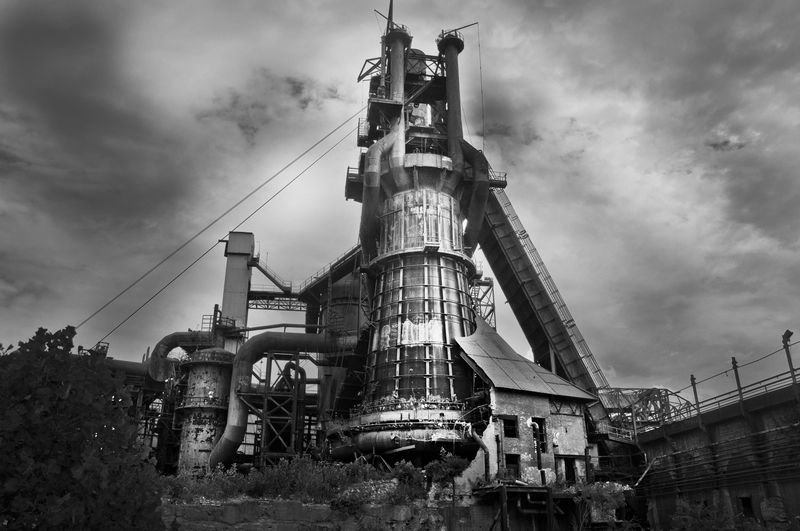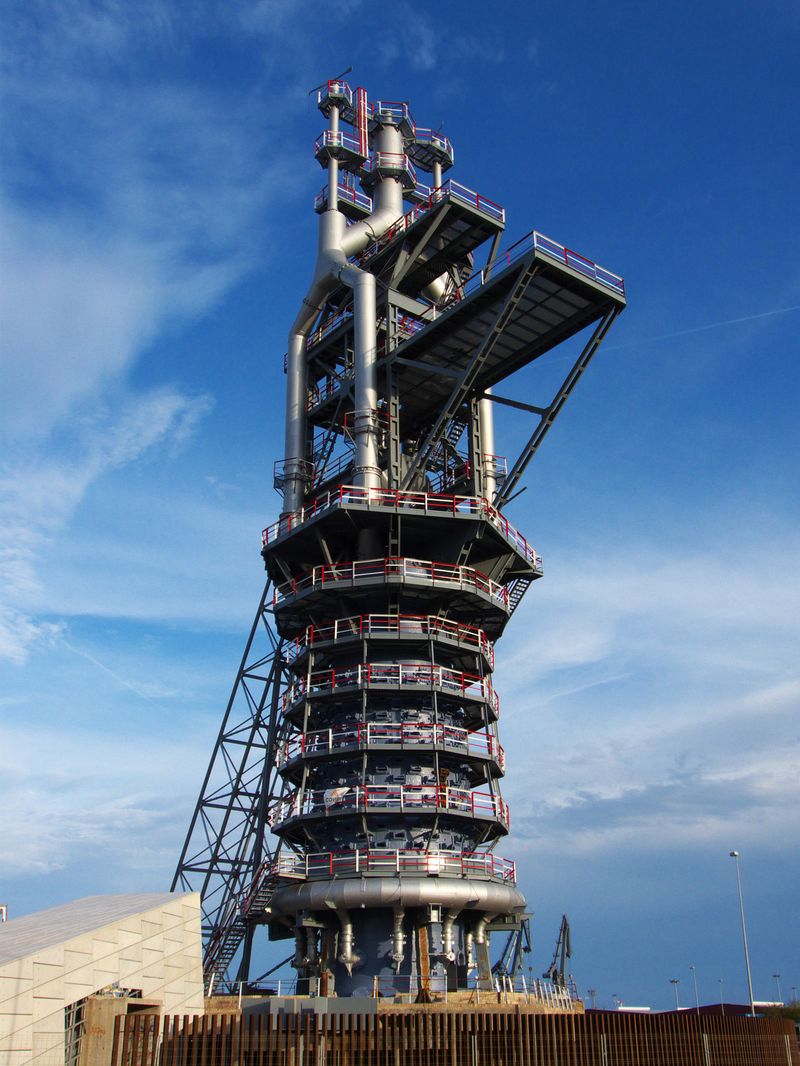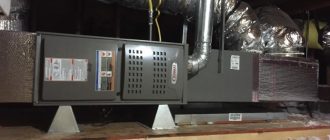
A History of the Modern Furnace
The furnace has undergone a remarkable evolution from its humble beginnings in ancient times to the sophisticated technological marvels we see today. Invented thousands of years ago, the furnace has played a crucial role in the advancement of human civilization and industrialization.
Ancient civilizations, such as the Egyptians and the Greeks, were among the first to discover the power of fire and how it could be harnessed for various purposes. These early inventions laid the foundation for the development of furnaces that were used for heating and smelting metals. The temperatures achieved in these early furnaces were limited, but they marked an important step in the history of this essential tool.
With the rise of the Industrial Revolution and the advancements in technology during the 18th and 19th centuries, furnaces underwent significant changes. The introduction of coal as a fuel source and the development of more efficient combustion techniques allowed for higher temperatures and increased productivity. This period witnessed the birth of the modern furnace and its rapid integration into various industries, such as iron and steel production.
Over the years, technological advancements have continued to push the boundaries of what is possible with furnaces. The introduction of electric furnaces in the 20th century brought a new level of precision and control over temperature, allowing for greater efficiency and versatility. Today, state-of-the-art furnaces incorporate advanced sensors and computerized systems, enabling precise temperature regulation, improved energy efficiency, and enhanced safety features.
The history of the modern furnace is a testament to human ingenuity and the relentless pursuit of innovation. From its ancient origins to the present, the furnace has been instrumental in shaping our world, powering industries, and transforming the way we live and work.
Ancient Furnaces
The inventions and technological advancements in the field of heating and metallurgy have taken place over centuries. The concept of a furnace can be traced back to ancient times when civilizations began harnessing fire for various purposes.
Ancient furnaces were the precursors to the modern industrial furnaces we have today. These early furnaces were typically simple structures made of clay or stone. They were used to heat objects, such as metals or ceramics, to high temperatures for shaping or melting purposes.
The ancient furnace designs varied depending on the specific needs of the civilization. Some were designed for smelting metals, while others were used for glassblowing or pottery. The temperature control in these early furnaces was a manual process, requiring constant attention from the furnace operator.
Despite their primitive nature, these ancient furnaces represented a significant leap forward in technological advancements. They allowed civilizations to create tools and objects that were previously unattainable. The ability to shape metals and create alloys played a crucial role in the development of ancient civilizations.
Over time, as human civilizations became more advanced, so did the design and functionality of furnaces. The industrial revolution of the 18th and 19th centuries brought about further advancements in furnace technology.
Today, modern industrial furnaces feature sophisticated controls and automation systems that allow for precise temperature regulation and optimal energy efficiency. The evolution of furnaces from ancient times to the present is a testament to the ingenuity and innovation of humankind.
In conclusion, ancient furnaces were the starting point for the technological advancements that led to the modern furnaces we have today. These early furnaces paved the way for the industrialization of metallurgy and the development of sophisticated heating systems. The ancient furnace is a testament to the ingenuity of ancient civilizations and the constant quest for technological improvement.
Early Smelting Techniques
Smelting, the process of extracting metal from its ore by heating it at a high temperature, has a long and fascinating history. The advancements in smelting techniques have played a crucial role in the history of industrialization and the technological evolution of furnaces.
In ancient times, smelting was often done in small, crude furnaces using simple techniques. The temperature was raised using natural fuel sources such as wood or charcoal, and the ore was heated until it reached its melting point. Once the metal was in a liquid state, impurities could be separated and removed.
Early smelting techniques were labor-intensive and required skilled workers who were able to control the temperature of the furnace and manage the extraction process. The process was time-consuming and inefficient, but it laid the foundation for future advancements.
Over the centuries, smelting techniques gradually improved as new materials and technologies became available. The use of bellows to increase airflow and the introduction of higher-quality fuels such as coke significantly increased the temperature and efficiency of the smelting process.
With the advent of the Industrial Revolution and the rise of modern metallurgy, furnaces became larger and more sophisticated. The introduction of electricity and new methods of controlling temperature further revolutionized smelting techniques, allowing for more precise and efficient extraction of metals.
Today, modern furnaces have reached new levels of technological advancement. They are equipped with advanced sensors and computer systems that allow for precise control over temperature, pressure, and other variables. Smelting techniques have become highly automated and optimized, leading to greater efficiency and reduced environmental impact.
The history of smelting techniques is a testament to human ingenuity and our constant pursuit of improvement. The evolution of furnaces and the advancements in smelting have played a pivotal role in shaping the modern industrial world.
The Impact of Iron Furnaces
The advent of iron furnaces has had a profound impact on the history of industrialization. The technological advancements in furnace design and operation have revolutionized the production of iron and steel, leading to the rapid growth of the modern industrial world.
Iron furnaces marked a significant milestone in the evolution of metallurgy. They enabled the production of iron on a large scale, making it cheaper and more readily available. This had a transformative effect on various industries, such as construction, transportation, and manufacturing.
The history of iron furnaces is closely intertwined with the history of modern inventions. The development of blast furnaces in the 14th century and subsequent improvements in their design allowed for the production of cast iron in significant quantities. This breakthrough facilitated the production of various iron products, including tools, machinery, and infrastructure.
The impact of iron furnaces extends beyond their technological advancements. Their widespread use also fueled massive economic growth, contributing to the emergence of industrial economies. Increased production of iron and steel led to the creation of new jobs and industries, fueling urbanization and societal development.
Moreover, the use of iron furnaces enabled the construction of large structures such as railways, bridges, and buildings. The strength and durability of iron transformed the architectural landscape, allowing for the construction of monumental structures that would have been unimaginable in earlier times.
In conclusion, the invention and evolution of iron furnaces have had a profound impact on the world. These technological advancements revolutionized the production of iron and steel, fueling industrialization and economic growth. The impact of iron furnaces is evident in the modern world, where iron and steel are essential materials in various industries and infrastructure projects.
The Development of Glass Furnaces
Glass furnaces have a long and fascinating history that dates back to ancient times. The invention of the furnace and the ability to control its temperature was a crucial milestone in the industrialization of glass production.
In ancient times, glass production was a laborious and time-consuming process. It required high temperatures to melt the raw materials, such as silica, soda, and lime, which were then cooled rapidly to form glass. These early furnaces were small and inefficient, and glass production was limited to small-scale artisanal workshops.
As history progressed, so did the advancements in glass furnace technology. The modern glass furnace that we are familiar with today is a result of centuries of evolution and inventions.
In the 19th century, with the rise of the Industrial Revolution, glass production became more efficient and widespread. The invention of the regenerative furnace by Friedrich Siemens revolutionized the glass industry. This furnace used waste heat from the combustion process to preheat the incoming fuel and air, greatly improving fuel efficiency.
Another significant development in glass furnace technology was the introduction of continuous tank furnaces in the early 20th century. These furnaces allowed for continuous production of glass, eliminating the need to shut down the furnace for batch changes. This innovation led to a significant increase in productivity and paved the way for mass production of glass.
Today, glass furnaces continue to evolve and incorporate new technologies. Advanced control systems, computer modeling, and automation have further improved the efficiency and precision of glass production. Furthermore, the focus has shifted towards developing environmentally friendly furnace designs that reduce energy consumption and emissions.
The development of glass furnaces throughout history showcases the ingenuity and dedication of individuals in advancing glassmaking techniques. From humble beginnings to modern-day advancements, the evolution of glass furnaces has played a vital role in shaping the glass industry and our everyday lives.
The Industrial Revolution and Furnace Innovation
The Industrial Revolution, which spanned from the mid-18th to mid-19th centuries, brought about significant changes in the history of furnace technology. The rapid evolution and technological advancements during this period had a profound impact on the design and capabilities of furnaces.
One of the major advancements during the Industrial Revolution was the use of coal as a fuel source for furnaces. Coal was abundant and provided a consistent and high-temperature fuel, allowing furnaces to reach much higher temperatures than before. This revolutionized various industries such as iron and steel production, as well as glassmaking.
The invention of the steam engine during this era also played a critical role in furnace innovation. Steam engines provided a reliable source of power, leading to the development of more efficient and larger furnaces. This enabled the industrialization of furnace processes, increasing production capacities and driving economic growth.
Furthermore, the Industrial Revolution saw the introduction of new materials and construction techniques for furnace design. Cast iron and firebrick became popular materials due to their heat resistance and durability. These advancements allowed for the construction of larger furnaces capable of sustaining higher temperatures and longer operation times.
The evolution of furnaces during the Industrial Revolution was fueled by the growing demand for various products, such as iron, steel, and glass. As industrialization spread, the need for furnaces that could handle larger quantities and higher temperatures became paramount. Furnace innovation became a driver of technological progress, leading to the development of more efficient and versatile furnaces that revolutionized manufacturing processes.
In conclusion, the Industrial Revolution played a key role in the history and evolution of modern furnaces. The technological advancements, inventions, and industrialization of this era brought about significant changes in furnace design, materials, and capabilities. These advancements paved the way for the modern furnace, allowing for higher temperatures, increased production capacities, and revolutionizing various industries.
The Role of Coal in Furnace Advancement
The technological advancements in furnace design and operation have played a crucial role in the industrialization and evolution of society. One significant factor in the progress of furnace technology is the utilization of coal as a fuel source.
Coal, a fossil fuel, has been used as a fuel for furnaces for centuries. Its abundance, high energy content, and accessibility made it an ideal choice for powering furnaces during the technological revolution. The industrialization that occurred during the 18th and 19th centuries drove the need for more efficient and powerful furnaces to melt metals and produce steam for various applications.
The use of coal in furnaces led to remarkable inventions and advancements in furnace design. The combustion of coal allowed furnaces to reach higher temperatures, enabling the production of cast iron and steel on a larger scale. This breakthrough in temperature control revolutionized the manufacturing industry by allowing the creation of more durable and versatile materials.
Furthermore, the shift to coal as a fuel source facilitated the development of new furnace designs and technologies. Innovations such as the blast furnace, which uses a continuous stream of heated air to increase the combustion efficiency, became possible due to coal’s high temperature capabilities. This invention revolutionized the iron and steel industry, making it more efficient and cost-effective.
In conclusion, coal has played a crucial role in the advancements of furnace technology. Its ability to produce high temperatures has enabled the development of modern furnaces capable of meeting the demands of industrialization. The utilization of coal as a fuel source has not only propelled progress in furnace design and operation but also has had a significant impact on the overall development of society.
Improvements in Metallurgical Furnaces
The history of metallurgical furnaces is dotted with numerous inventions and advancements that have revolutionized the process of metallurgy. From ancient times to the present, the industrialization and technological advancements have led to the development of modern furnaces capable of achieving higher temperatures and producing higher quality metal.
One of the key advancements in metallurgical furnaces was the invention of the blast furnace in the 14th century. This revolutionary furnace allowed for the mass production of iron and greatly contributed to the rise of the Iron Age. The blast furnace utilized a continuous process of iron production, where iron ore, along with coke and limestone, was fed into the furnace and subjected to high temperatures to extract the desired metal.
Throughout history, there have been numerous improvements in the design and efficiency of metallurgical furnaces. With the advancement of technology, furnaces have become more sophisticated, allowing for better control of temperature and improved extraction of metals. The introduction of advanced refractory materials such as firebrick and ceramic fiber insulation has enabled furnaces to withstand higher temperatures and provide more consistent heat distribution.
In recent years, the development of electric arc furnaces has revolutionized the metallurgical industry. These furnaces use electric arcs to generate heat, allowing for precise control of temperature and reducing the need for traditional fuel sources. Electric arc furnaces have made it possible to produce high-quality metals with lower energy consumption and reduced environmental impact.
The advancements in metallurgical furnaces have greatly contributed to the transformation of the manufacturing industry. The ability to achieve higher temperatures and improve heat distribution has led to the production of stronger and more durable metals. These advancements continue to drive innovation in industries such as automotive, aerospace, and construction, where the demand for high-performance materials is ever-growing.
The Birth of the Blast Furnace

Throughout history, there have been numerous advancements and inventions that have shaped the modern world as we know it. One such invention that has played a key role in the evolution of technological progress is the blast furnace.
The blast furnace, also known as the hot blast stove, has a long and storied history. It was first developed in ancient times and has since undergone significant changes to become the highly efficient and sophisticated furnace that is used today.
The blast furnace revolutionized the process of smelting iron by allowing for the production of large quantities of iron at high temperatures. This technological breakthrough was a game-changer in the world of metallurgy, as it made it possible to produce iron on an industrial scale.
Before the blast furnace, iron was mostly produced through small-scale, labor-intensive methods, such as bloomeries. These older methods were inefficient and produced iron of varying quality. The invention of the blast furnace marked a significant shift in the production of iron, allowing for greater efficiency and consistency in the quality of the final product.
The blast furnace operates by blowing air into the furnace at high temperatures. This process helps to increase the temperature inside the furnace and facilitates the chemical reactions necessary for the smelting of iron ore. The hot air is produced by a separate device, known as the hot blast stove, which allows for precise control of the temperature.
Over time, the blast furnace has undergone numerous technological advancements, resulting in increased efficiency and productivity. The introduction of various improvements, such as the use of coke instead of charcoal and the development of more advanced furnace designs, has further improved the performance of blast furnaces.
Today, blast furnaces are an integral part of the modern iron and steel industry. They continue to play a crucial role in the production of iron and steel by providing a means of obtaining high-quality iron in large quantities. The ongoing advancements and innovations in furnace technology ensure that blast furnaces remain at the forefront of industrial progress.
In conclusion, the birth of the blast furnace marked a significant milestone in the history of metallurgy. Its invention has had a profound impact on the development of the iron and steel industry, paving the way for modern advancements in technology and production methods. The evolution of the blast furnace is a testament to human ingenuity and the constant drive for progress.
Furnace Evolution in the 20th Century
In the 20th century, the evolution of furnaces went hand in hand with the technological advancements of the time. As industrialization took hold, the demand for more efficient and reliable heating systems grew, leading to a series of inventions and innovations in furnace design and operation.
One of the key developments in furnace technology was the introduction of automatic temperature control. Prior to this, furnaces relied on manual adjustments, making it difficult to maintain a consistent temperature. With the advent of automatic temperature control systems, furnaces became more precise and efficient, leading to improved performance in various industries.
Another significant advancement was the development of electric furnaces. Unlike their predecessors that relied on fossil fuels for heat, electric furnaces used electricity to generate heat. This not only made them more environmentally friendly but also allowed for easier temperature control and more precise heating. Electric furnaces quickly gained popularity in both residential and industrial settings.
As the 20th century progressed, furnace manufacturers continued to refine their designs and make them more efficient. The introduction of forced-air furnaces revolutionized heating by employing fans to circulate heated air throughout a building. This not only improved heating efficiency but also allowed for the integration of air conditioning systems, further enhancing comfort in indoor environments.
The advancements in furnace technology in the 20th century paved the way for the modern furnaces we have today. These furnaces are capable of achieving precise temperature control, high energy efficiency, and reduced environmental impact. They have become an essential component of modern heating and cooling systems, ensuring comfortable and sustainable indoor environments.
The Rise of Electric Furnaces
The inventions and evolution of furnaces have played a crucial role in the advancements of technology throughout history. As industrialization took hold, the need for efficient and reliable heating systems became paramount. This led to the development of the modern furnace, which has undergone significant changes over the years.
One of the most significant advancements in furnace technology has been the rise of electric furnaces. Electric furnaces use electricity as their primary source of heat, eliminating the need for traditional fuel sources such as coal or gas. This innovation has revolutionized the way we heat our homes and buildings.
The introduction of electric furnaces brought many benefits. They are cleaner and more eco-friendly compared to their predecessors. Electric furnaces produce zero emissions during operation, making them a greener option for heating. They also eliminate the need for fuel storage, reducing the risk of accidents or leaks.
Electric furnaces are also more efficient than traditional furnaces. They can convert virtually all the energy they consume into heat, making them highly efficient in delivering warmth. Furthermore, electric furnaces offer precise temperature control, allowing for customized heating settings tailored to individual preferences.
Modern electric furnaces have also seen technological advancements. Many models now feature programmable thermostats and remote control capabilities, enabling users to conveniently adjust their heating settings. Some electric furnaces even incorporate smart home technology, allowing for integration with home automation systems.
Overall, the rise of electric furnaces has transformed the heating industry. These innovative devices have not only improved heating efficiency but have also contributed to reducing our carbon footprint. As technology continues to advance, it is expected that electric furnaces will become even more prevalent in modern homes and buildings.
The Era of High-Efficiency Furnaces
In the modern era, the invention and history of the furnace have seen significant technological advancements, leading to the development of high-efficiency furnaces. These innovative heating systems have revolutionized the way we heat our homes and businesses.
With the rapid industrialization and advancement of technology in the 20th century, furnaces underwent a major transformation. Engineers and scientists sought ways to improve the efficiency of furnaces, aiming to reduce energy consumption and environmental impact.
One of the key milestones in the evolution of the furnace was the introduction of the high-efficiency condensing furnace. This technological breakthrough utilized a secondary heat exchanger that captured additional heat from the combustion gases, increasing overall efficiency.
The development of electronic ignition systems also played a crucial role in enhancing furnace efficiency. These systems replaced the traditional pilot light, minimizing energy waste and reducing the need for maintenance.
Advancements in insulation and sealing techniques also contributed to the improved efficiency of modern furnaces. These innovations prevent heat loss and air leaks, ensuring that the heat generated by the furnace stays inside the intended space.
Moreover, the integration of programmable thermostats and smart home technology allows for precise temperature control and efficient energy usage. Homeowners can now conveniently schedule temperature adjustments and monitor their furnace performance remotely.
The era of high-efficiency furnaces marks a significant milestone in the history of this vital heating appliance. These advancements not only increase energy efficiency but also contribute to reducing greenhouse gas emissions and minimizing environmental impact.
Furnace Technology Today
The evolution of furnace technology has come a long way from its ancient roots. In modern times, furnaces have become highly sophisticated and efficient machines capable of achieving precise temperatures and producing consistent results.
Thanks to a series of groundbreaking inventions and advancements throughout history, furnace technology has undergone dramatic transformations. From the time of ancient civilizations to the present, the furnace has played a vital role in various industries, including metalworking, ceramics, and glass production.
Today, modern furnaces are equipped with state-of-the-art temperature control systems, allowing for enhanced precision and accuracy. Advanced computer algorithms and sensors monitor and adjust the temperature and other operating parameters in real-time, ensuring optimal performance.
The industrialization of furnace technology has also contributed to the advancement of various manufacturing processes. The ability to produce high temperatures quickly and consistently has revolutionized industries such as steel production, where accurate and controlled heating is crucial.
Furnace technology today also focuses on energy efficiency and environmental sustainability. Engineers and scientists are continuously developing new methods and materials to increase energy efficiency and reduce emissions. This has led to the adoption of innovative technologies, such as electric furnaces and gas-fired furnaces with advanced combustion systems.
In conclusion, the history of the furnace is a testament to human ingenuity and innovation. From its humble beginnings to the modern era, furnace technology has evolved significantly. Through advancements in temperature control, industrialization, and energy efficiency, modern furnaces continue to play a vital role in various industries, contributing to the growth and progress of society.
The Impact of Digital Controls
The evolution of the furnace and its inventions throughout history has led to significant advancements in temperature control. The technological developments in modern furnaces have paved the way for the introduction of digital controls, which have revolutionized the furnace industry.
The use of digital controls in furnaces has greatly improved the accuracy and efficiency of temperature regulation. Traditional furnaces relied on manual adjustments and mechanical thermostats, which were prone to inaccuracies and inconsistencies. However, with the advent of digital controls, furnace operators can now set and maintain precise temperature levels with ease.
One of the key benefits of digital controls is their ability to provide real-time temperature monitoring. Furnace operators can access temperature data on a digital display, allowing them to make adjustments and troubleshoot any issues that may arise. This level of control and visibility was previously unimaginable.
Additionally, digital controls offer advanced programming capabilities, enabling furnace operators to create and save customized temperature profiles. This not only enhances operational efficiency but also reduces human error and increases productivity. Operators can now optimize furnace processes based on specific requirements, resulting in improved performance and energy savings.
Furthermore, the integration of digital controls with other technological systems has expanded the potential applications of modern furnaces. For example, remote monitoring and control capabilities allow furnace operators to manage and adjust temperature settings from anywhere, enhancing convenience and flexibility.
In conclusion, the introduction of digital controls has had a profound impact on the furnace industry. These technological advancements have significantly improved temperature regulation, accuracy, and operational efficiency. With ongoing innovations in digital control systems, the future of furnace technology looks promising.
Question-answer:
When and where were the first furnaces developed?
The first furnaces were developed in ancient Mesopotamia around 3000 BCE.
How has furnace technology evolved over time?
Furnace technology has evolved significantly over time, from basic clay ovens to sophisticated modern systems with advanced controls and energy-efficient designs.
What are some key milestones in the development of modern furnaces?
Some key milestones in the development of modern furnaces include the invention of the blast furnace in the 14th century, the introduction of coal as a fuel source in the 17th century, and the development of gas furnaces in the 19th century.
How have modern furnaces improved energy efficiency?
Modern furnaces have improved energy efficiency through the use of advanced combustion technologies, insulation materials, and controls that optimize fuel consumption.
What are some future trends in furnace technology?
Some future trends in furnace technology include the development of smart furnaces that can be controlled remotely, the use of renewable energy sources as fuel, and the integration of furnaces with other systems in smart homes.
What is the history of furnaces?
Furnaces have been used since ancient times for various purposes such as heating, cooking, and metalworking. The early furnaces were simple structures made of clay or stone.






